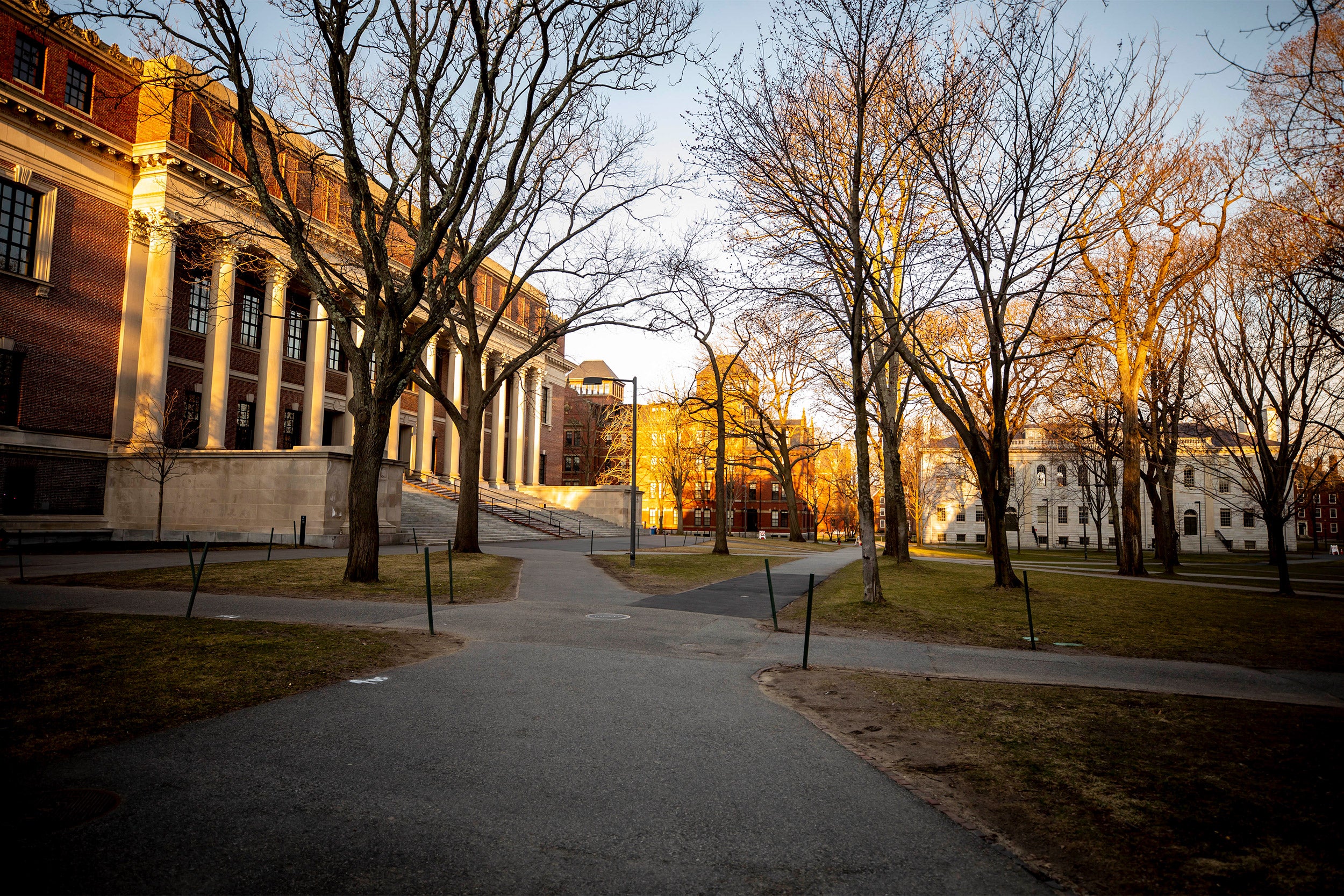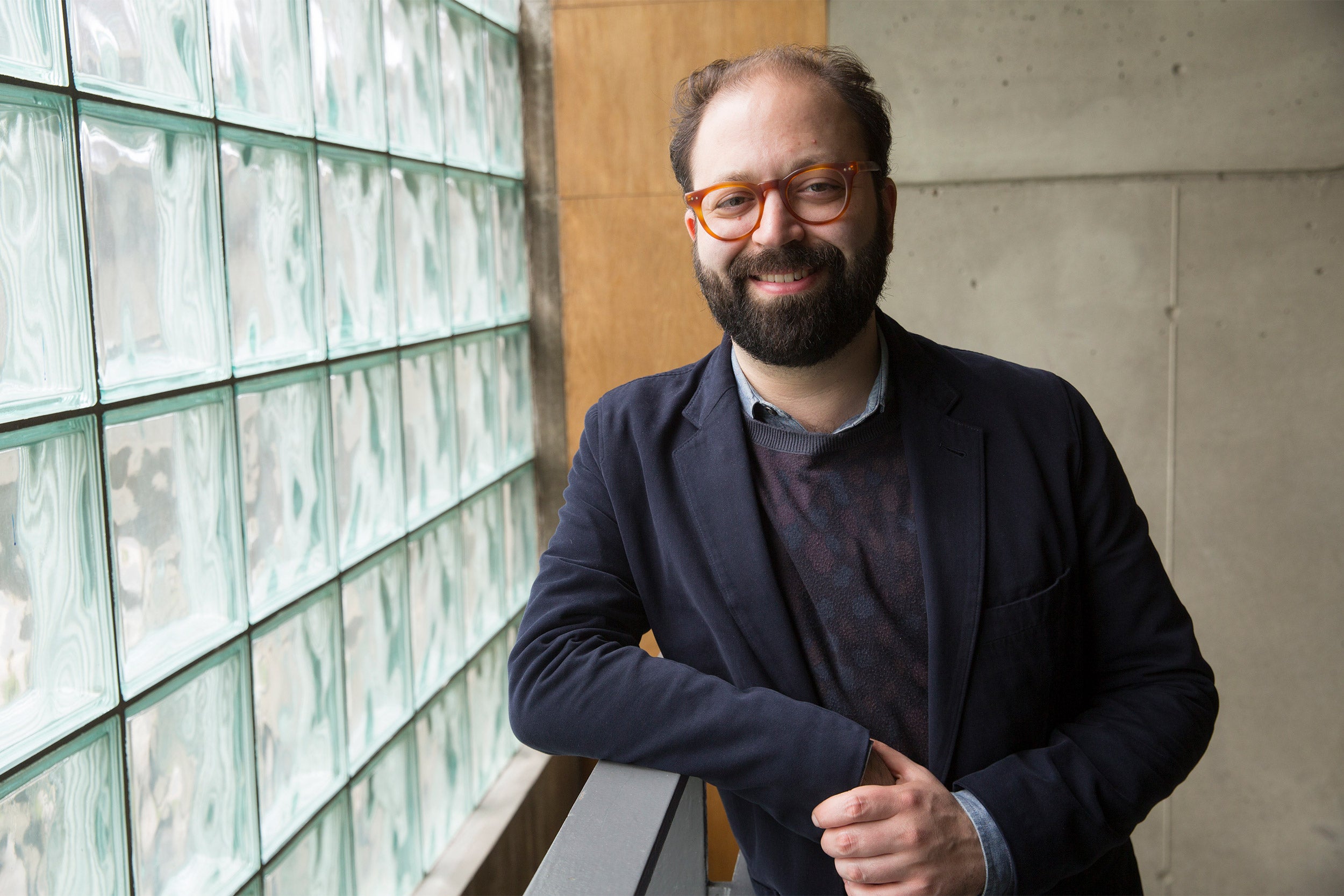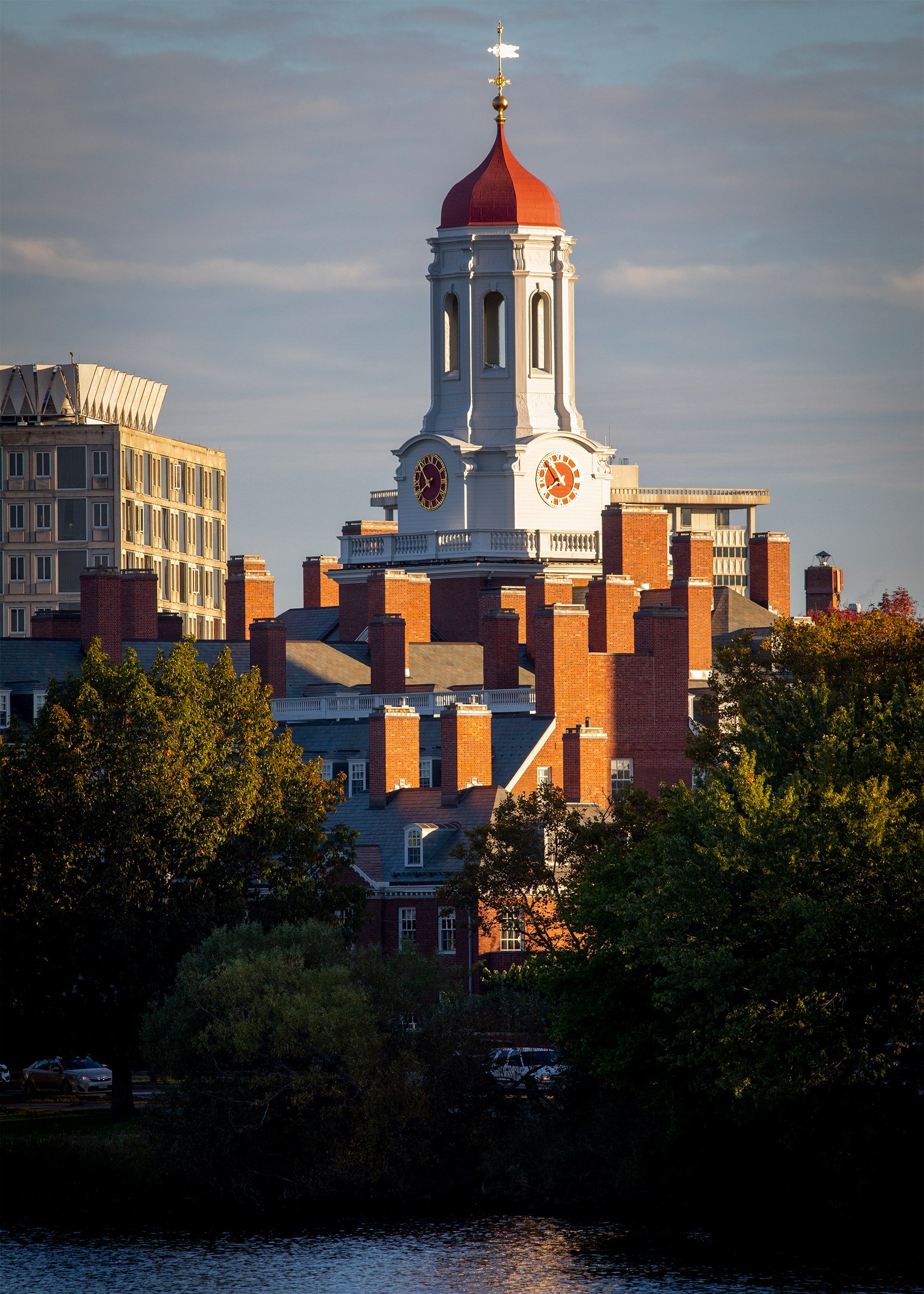
The FAS Committee on Visual Culture and Signage will address the task force’s recommendations to create a more visually inclusive campus.
Rose Lincoln/Harvard Staff Photographer
Reimagining visual culture on campus
FAS Task Force suggests taking closer look at public art, signs to create more inclusive, welcoming environment
The Faculty of Arts and Sciences Task Force on Visual Culture and Signage has released its report on how to evolve a more inclusive visual culture that makes space for the multitude of voices and stories that make up the past, present, and future of the FAS.
Claudine Gay, Edgerley Family Dean of the FAS, announced the group’s findings on Monday. They offered a set of principles and several recommendations, including establishing the new position of FAS campus curator and creating a Committee on Visual Culture and Signage.
“The task force report offers an inspiring and ambitious vision for the future of our shared spaces,” said Gay, who commissioned the panel last fall. “It calls for a dynamic approach to our visual culture and signage, one that takes seriously the practices of curation and understands our visual environment as a site of both profound educational opportunity as well as of consequential experience and affirmative community.”
Dean of Arts and Humanities Robin Kelsey, who chaired the task force, said the FAS can use public art to communicate its identity and its ambitions to its own community and the world. He noted that the public art traditionally used at Harvard is of the permanent kind — sculptures and plaques that have become important landmarks on campus — but there is opportunity to expand to more transient forms that can create crucial moments for gathering, reflection, and self-criticism.
The committee’s first priorities will be the visual renewal of the FAS Faculty Room, Annenberg Hall, and the GSAS Student Center, said Robin Kelsey, who chairs the task force that presented the report.
Stephanie Mitchell/Harvard file photo

“We represent the past of our institution, amply, through the portraits on our walls, and the sculptures in our courtyards, and the plaques on our buildings. But we don’t represent that history with the breadth that corresponds to the inclusiveness of the institution in the present, or what we hope will be the even greater inclusiveness of the institution in the future,” Kelsey said.
Dan Byers, John R. and Barbara Robinson Family Director at Carpenter Center for the Visual Arts, will chair the committee.
“I feel both the weight of this important work along with a real sense of energy and excitement about how we might be more intentional, inclusive, experimental, and generous in the ways we express and organize our visual culture, and how we tell our campus’ stories,” Byers said. “I’m grateful for the opportunity to work alongside a diverse group of inspiring colleagues to think through complicated questions of history, aesthetics, representation, and what it means to express our values in the visual realm.”
Among its first priorities, the committee and campus curator will focus on helping steer the visual renewal at the FAS Faculty Room, Annenberg Hall, and the GSAS Student Center in Lehman Hall. Each location represents an opportunity to create spaces that are more inclusive and community-affirming, Kelsey said.
“When we spoke with undergraduates, we heard time and again about Annenberg and the extent to which the portraits on the walls suggest to many students that they don’t belong to the real Harvard,” he said, adding that he has heard similar sentiments from graduate students and faculty. “Some of those conversations were deeply moving and motivating. I think that’s a space where we could make a huge difference to the undergraduate community by making some appropriate changes.”
In its 29-page report, the task force also called for a dynamic program for public art in FAS, moving beyond portraiture, and reimagining campus spaces to be more inclusive of disabled members of the community.
Byers highlighted the need to improve signage around campus as well.
“Signage — and its related field of way-finding — helps us locate our place in the world, or place in relation to the people and buildings around us,” he said. “What if we actually knew what went on inside of each building we passed? What if we were given the opportunity to learn about those buildings and what people have done inside them? We are not an open-air museum. And yet we are still a vital historical site where too few of the lives and achievements of those who have learned and taught and worked here are made known to those of us who hurry to work or class every day.”
Dan Byers, chair of the committee, highlighted the need to improve signage around campus.
Jon Chase/Harvard file photo

Kelsey noted that Harvard’s historic usage of portraiture is “limited” as a genre, and the FAS has an opportunity to highlight the community’s collaborative spirit.
“We need to go forward with a spirit of adventure and with an experimental mindset. We want to be careful. We want to be inclusive in all the process that we follow as we make changes, but we don’t want to be too timid,” he said. “One of the things I would ask the community is to be patient as we move forward. Our visual culture as it exists represents an enormous investment. We can’t snap our fingers and overnight have all the changes that we would like to see. Being smart about our priorities and about finding those interventions that will make the most difference to our community is very important.”
The task force made it one of its top priorities to support FAS units in their efforts to update their visual culture. To do that, it established guidelines that would give units a process to follow.
“The visual culture of the FAS is capacious and varied, and the task force’s vision for evolving it is big and ambitious,” Gay said. “Enacting this vision will require time, patience, and generosity from our community. But I am also profoundly hopeful that the work ahead will be meaningful and transformative — not only for our physical spaces but also for the members of our community who inhabit them.”





